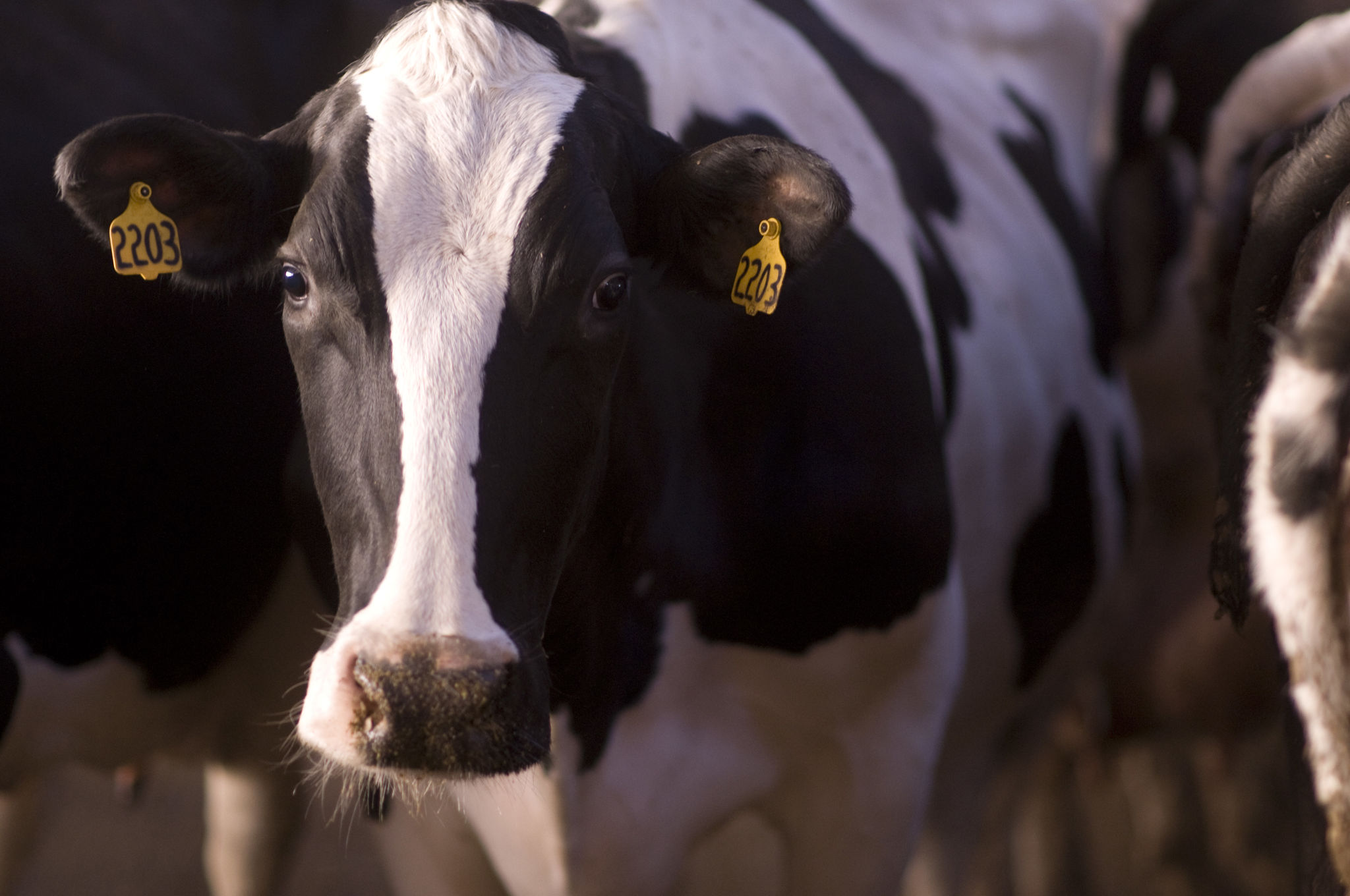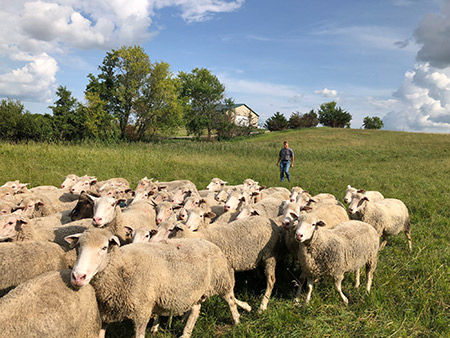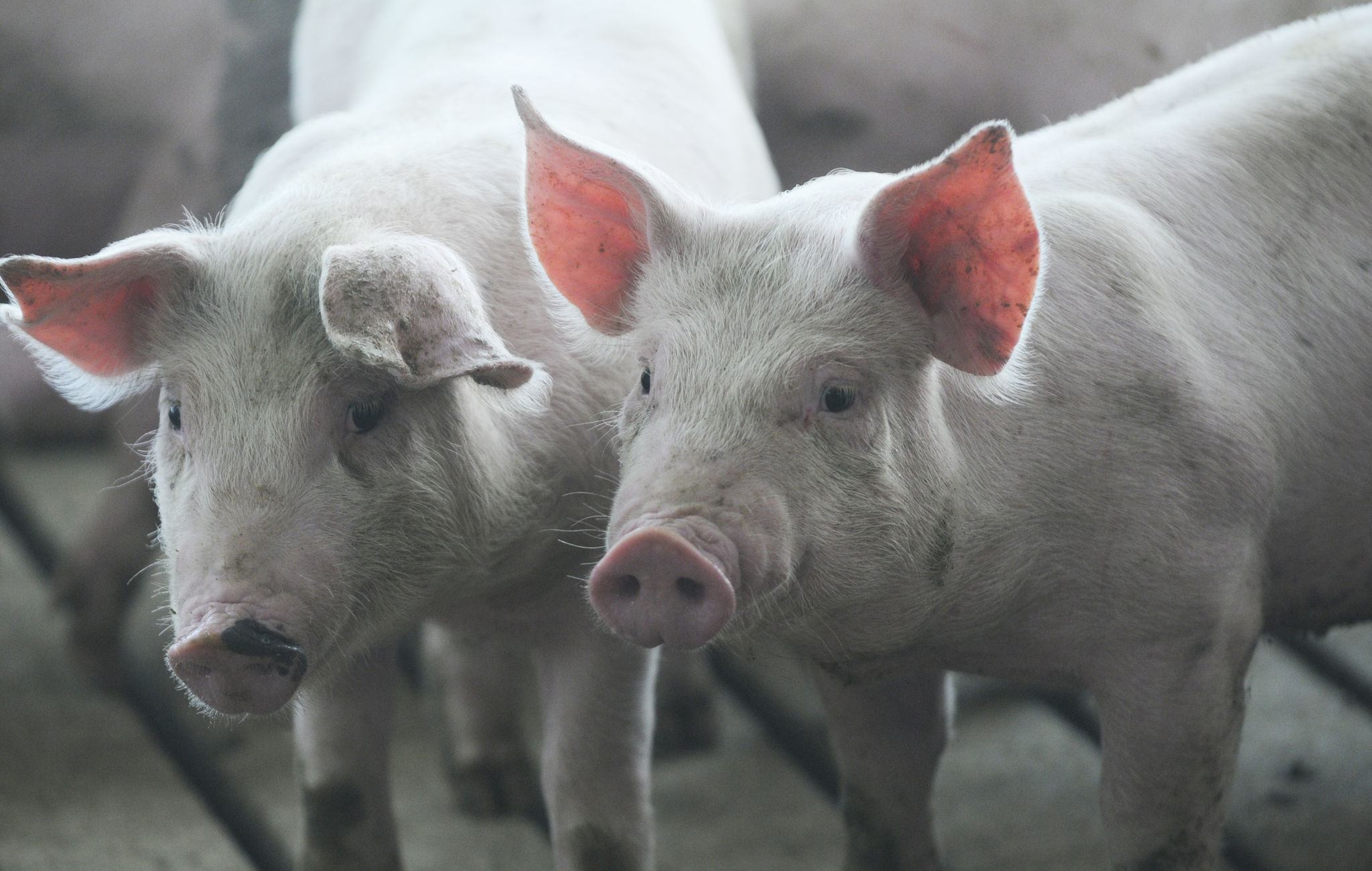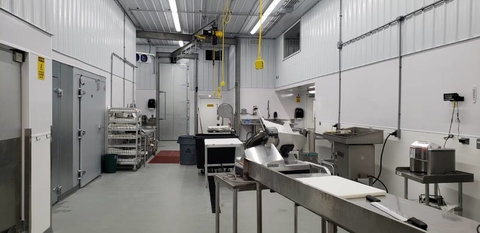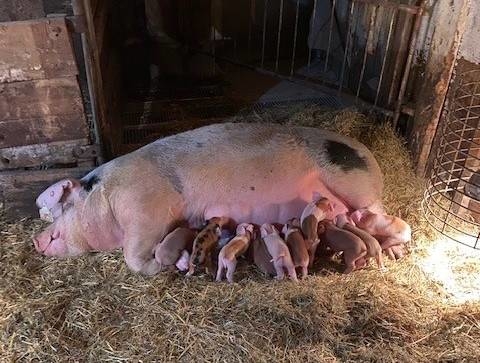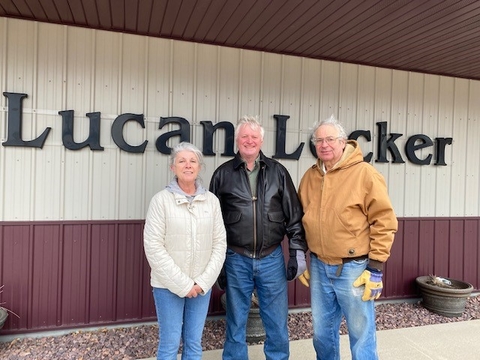Finding nearby facilities that can process her meat has never been easy for northeastern Minnesota livestock farmer Jane Jewett. Anticipating delays, in early 2021 Jewett called her butcher before her newest pigs were even born. “I still couldn’t get on the schedule in time for when the pigs were going to be ready for market,” she said.
It’s a problem faced by livestock farmers across the state. In a 2020 survey of Minnesota farmers, a majority said that processing options were not adequate even before the COVID-19 pandemic.
Jewett, who is also the associate director of the Minnesota Institute for Sustainable Agriculture (MISA), travels more than 100 miles each way to the nearest inspected butchering of her pigs and cattle, and 70 miles each way for her chickens.
The processing landscape
Nationally, the meat-processing market is concentrated in four large companies. The lack of competition affects farm profits and consumer prices. In Minnesota, about 30% of Minnesota hogs are processed at the Smithfield plant in Sioux Falls and about 10% at the JBS plant in Worthington.
“When large local meat-processing plants went down due to COVID, there was a well-publicized supply chain bottleneck,” said Greg Schweser, University of Minnesota Extension educator with the Regional Sustainable Development Partnerships (RSDP).
But Minnesota’s small and mid-size livestock producers already lacked access to affordable processing facilities that could accommodate their smaller quantities, according to a report from RSDP, which is working with partners on a variety of projects to improve meat-processing access.
Workforce needs
Small meat-processing businesses can be challenging to start and to run. In addition to upfront costs, owners need skilled labor to meet seasonal demand.
“Someone who has the financing, business plan and cash flow can still fail for lack of skilled employees,” Schweser said. “There can be a lot of meat—and your profit—left on the bone if you don’t know how to cut.”
RSDP worked with University of Minnesota students to interview owners of small processing facilities in the Midwest. Limited access to skilled labor emerged as a key challenge.
Demographic shifts could exacerbate the issue. A 2014 study by the Agricultural Utilization Research Institute (AURI) found that two-thirds of the owners of small meat-processing facilities in Minnesota were at or near retirement age, and half of the facilities were more than 40 years old.
“A lot of meat-processing owners are retiring or close to retiring, and they’re having trouble finding people who can take over the business,” said Harshada Karnik, a researcher with the University of Minnesota School of Public Health who has helped RSDP and the Minnesota Farmers Union (MFU) explore the issue. “Labor is a problem but also management.”
Other challenges include finding capital to modernize processing equipment and paying competitive wages when profit margins are low.
Building relationships among farmers, processors and consumers is key, especially when supply and demand for processing are mismatched geographically or seasonally. Karnik’s research suggests that it can be helpful for processors to have marketing strategies that differentiate their product. She added, “Having one anchor customer who reliably and regularly brings in volume can allow a processor to set aside days for smaller farmers who will bring in fewer animals.”
According to Jewett, it’s important that small-scale producers have access to inspected slaughter facilities so they can diversify their marketing channels. Farmers who rely on custom-exempt facilities are limited in their distribution. “Having the inspected slaughter pathway is the only way smaller farmers can sell at farmers markets or access things like grocery stores and farm-to-school,” Jewett said.
Additional support
Following COVID-related shutdowns, federal and state resources helped address processing bottlenecks, such as $500 million through the American Rescue Plan. In Minnesota, the Department of Agriculture offers grants to support processing businesses. In 2021, MFU was involved in a variety of legislative efforts, including funding for meat-cutting training programs and development of a mobile processing unit.
“Our members identified processing as a top priority, and meat processing in particular recognizing that the bottleneck was exacerbated due to COVID-19—recognizing it’s not sustainable and it’s not fair,” said Stu Lourey, MFU director of government relations.
The bottleneck issue is far from resolved. “The scale is just so large, and the lack of investment is not just acute but it’s chronic,” Lourey said, emphasizing the importance of strong partnerships that have been built “for the long path ahead.”
Coming together to find solutions
A working group involving meat processors, livestock producers, MFU, MISA, the Sustainable Farming Association of Minnesota, the Minnesota Department of Agriculture, RSDP and others formed in response to Minnesota’s bottleneck.
Wabasso-area livestock farmer Paul Sobocinski is one member of the working group. In spring 2021, Sobocinksi partnered with Lucan livestock farmer and former state legislator Ted Suss and environmental leader Don Arnosti to propose a project to RSDP to dive deeper into workforce issues. With support from all five RSDP regions, the Minnesota Department of Agriculture and graduate research assistant Maya Benedict, the team is surveying processors around the state. At the same time, the Staples campus of Central Lakes College and Ridgewater College in Willmar and Hutchinson are preparing to offer meat-cutting programs starting in 2022.
Access for underserved populations
The project team is building relationships with organizations such as the Latino Economic Development Center to understand the unique workforce needs of emerging producers. “They have some producers who have beginning farming operations and also have people who may have an interest in meat processing in terms of training and maybe working toward ownership,” Sobocinski said.
Another project aims to improve access to meat processing for tribal communities, while other projects have explored market opportunities and barriers for expanding halal and kosher meat markets.
Tribal communities face unique challenges. “More and more tribal communities are adding buffalo onto some of their landscapes,” said RSDP Statewide Director Kathy Draeger.
As Karnik explained, a live bison is too wild to be taken to a processing unit. “Because we have tribal nations that have bison farms, a mobile processing unit in Minnesota would really help out with the processing.”
Sustainability and resilience
“Livestock are part of the farm ecosystem,” Draeger said. “Small and medium-sized farms in particular need the nutrient value from the manure to fertilize their crops and the diversified income.”
When small and mid-sized farmers are supported, communities become more resilient. “What really strikes me as a farmer and also as a longtime policy organizer is looking at what you can build in your local communities,” said Sobocinski, who recently retired as a policy organizer for the Land Stewardship Project.
Draeger agreed that this is an important lesson of the COVID-19 pandemic. “Maintaining and increasing independent meat slaughter and processing is critical to supply chain resilience.”
Related research supported by RSDP:
- Considerations and benefits of developing a Minnesota-based halal meat supply chain (August 2021)
- COVID-19 and local meat processing in the Midwest: Challenges and emerging business practices (May 2021)
- Halal and kosher Minnesota meat market assessment: Analysis, implications and recommendations (January 2020)


